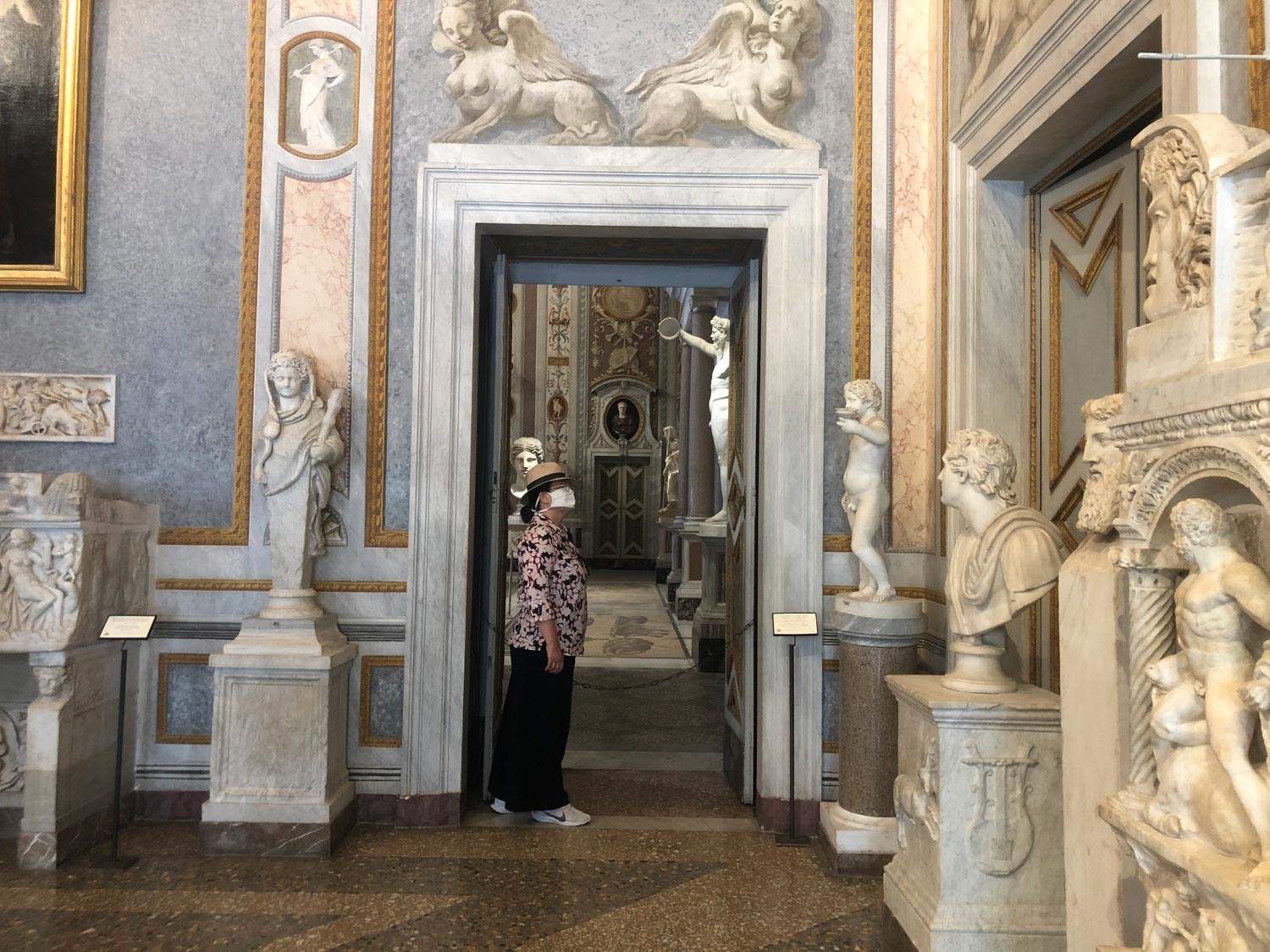Museums closed, UIL: "neglected factors that would have allowed partial reopenings"
Third appointment with the cultural heritage civil service unions on the issue of museum closures: after speaking with the CGIL and the CISL, today we probe UIL’s opinion with the national coordinator of UILPA Ministry of Culture, Federico Trastulli. Here are his answers to our questions.
 |
| Visitor at the Borghese Gallery |
On museum closures, it has been said that the decision was made to limit opportunities for contagion, but there are studies that say that in observance of measures to contain contagion, they are the safest places ever, and after all, the experience of Spain (where several museums have never closed) teaches that the opening of cultural venues could easily coexist with the containment of Covid-19. What is your position on the issue of indiscriminate museum closures?
The impact of Covid-19 on our lives resulted, especially in the first period, in urgent and emergency choices, which involved, among other things, closing sites as an element of containment. Subsequently, having gained control over the general condition of the country, a partial reopening of the sites was chosen (and this, too, entailed repercussions in organizational terms that were not always easy to manage), but we agree that all the conditions and procedures were in place to allow cultural enjoyment in absolute safety. In any case, today we have emerged from the emergency, so psychologically we are in a position to make decisions with greater clarity, avoiding discrimination between sites and sites.
Why do you think there has not been at least a difference between large and small museums? There are large and very popular museums in the historic centers of large cities (such as the Uffizi, the Egyptian Museum in Turin, or the civic museums in Venice, for example), but there are also small museums in the provinces, easily reached by the public and workers, and already little visited in their own right.
On the issue of museum management, the unitary approach, without differentiation between the center and the periphery and without taking into account those factors that would have allowed a partial reopening, has probably weighed negatively. It is also true that keeping a museum open involves operating costs independent of the flow of tourists, so the economic-management factor probably also prevailed over the choice of localized or partial openings. Let us also say that the issue of cultural enjoyment is also linked to the management of other sectors such as health care and infrastructure and transportation, so it is always good to remember this before proceeding with evaluations.
For big cities, it has been said that the problem is mainly in transportation and it especially affects workers. Have you ever asked the ministry or the entities that run the museums to have employees reimbursed for travel by their own means in order to avoid having them take public transportation?
No, I am not aware of any such initiatives. The overall situation is really quite varied. One discriminating factor is the very possibility of using one’s own vehicle by taking advantage of on-site parking, otherwise private transportation costs would become unaffordable. Venice, for one, is cut off completely. At central sites in the city of Rome, the cost of parking (where not present at the work site) would be prohibitive because no one or almost no one is a resident of the center.
Have any public employees asked your union to open museums? If so, what percentage?
Some public employees have asked us to reopen, not many actually. Fear dominated everyone’s lives in the first period. Subsequently, the psychological burden of staying indoors prevailed, and then the desire to reopen sites emerged in order to be able to work in presence, although it should be borne in mind that the category of reception and supervision has, in fact, worked almost all the time since protection prescribes the presence of workers even when the museum is closed, acting as a garrison.
What do you think needs to be done to open a museum safely?
First of all, it is essential to comply with safety protocols, which define everything necessary. There was immediate funding for PPE and plexiglass to separate interior areas and ensure the safety of employees and users. Competent physicians were also involved to monitor the health of workers and determine their possible participation in attendance at the various lines of ministry activities. Unfortunately, the general condition of the infection does not seem, at least today, to guarantee the possibility of reopening because the virus variants are very dangerous and the vaccination campaign is not yet extensive. Not to mention that tourism at the moment may be only local/residential (not that this is a bad thing, mind you, quite the contrary... but the regions are either red or orange so with travel limited only to municipalities or at any rate within the region).
Have you lobbied or are you lobbying the Ministry of Culture to ask that everything be reopened as soon as possible, logically safely and in accordance with current protocols?
We have written a note to the minister in recent days with a request to meet with him urgently, to also discuss, among many things, the overall situation of the ministry in terms of reopening. We will see if he responds to us.
 |
| Museums closed, UIL: "neglected factors that would have allowed partial reopenings" |
Warning: the translation into English of the original Italian article was created using automatic tools. We undertake to review all articles, but we do not guarantee the total absence of inaccuracies in the translation due to the program. You can find the original by clicking on the ITA button. If you find any mistake,please contact us.




























